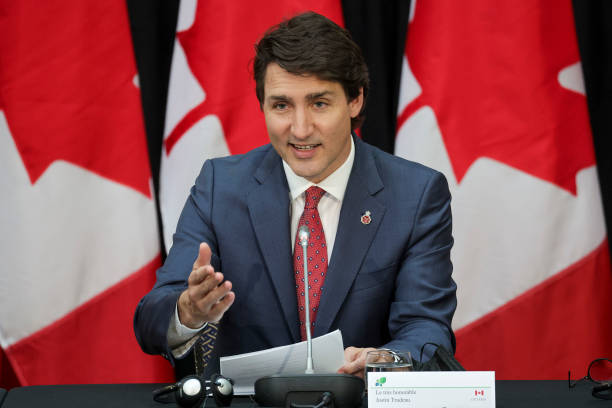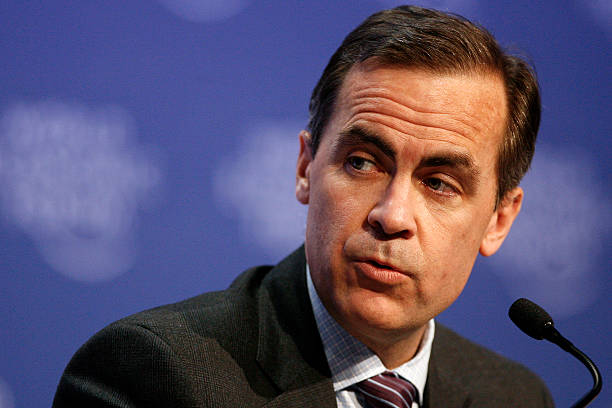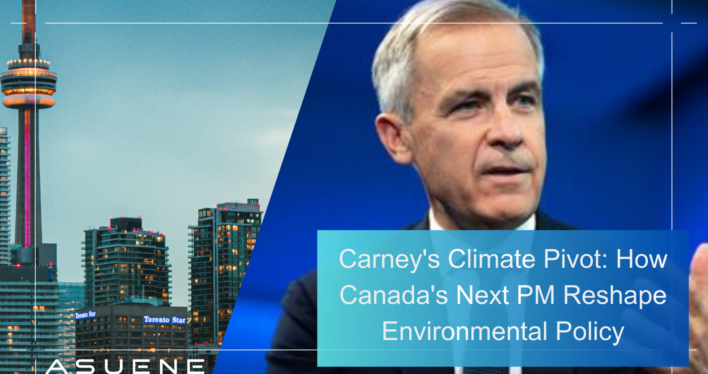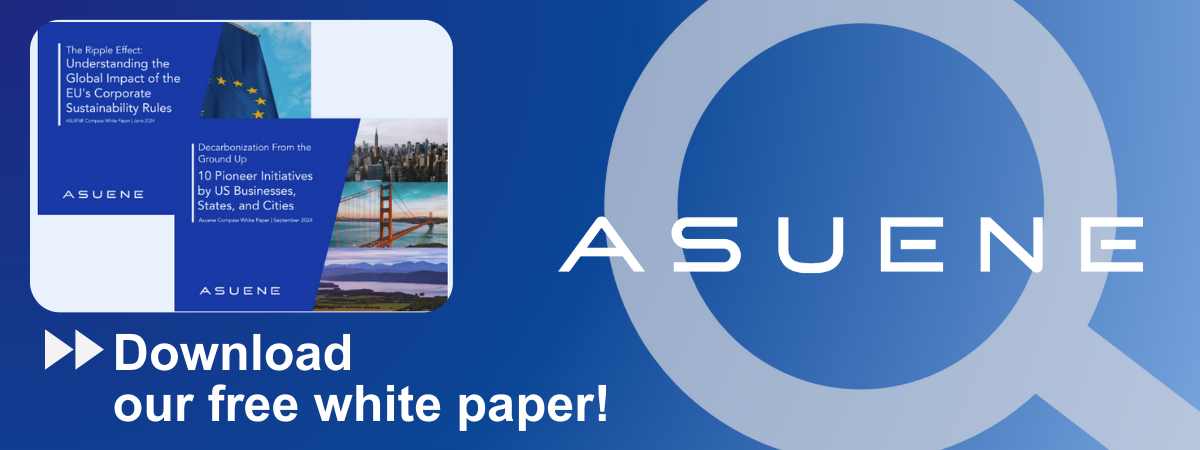- Article Summary
-
Introduction
Mark Carney, recently elected as the leader of the Liberal Party of Canada and set to become prime minister, brings a unique perspective to Canada’s climate policy. His background as Governor of the Bank of Canada and the Bank of England, coupled with his role as UN Special Envoy on Climate Action and Finance, positions him to influence decarbonization strategies significantly. This article compares his past climate involvement with the Trudeau government’s policies and offers insights into what his leadership might mean for Canada’s future.
Key Points
- Mark Carney’s recent statements indicate that, as the incoming prime minister, he is likely to shift Canada’s decarbonization strategy from a consumer carbon tax to green incentives.
- Research highlights that Carney’s past roles, especially at the Bank of England, focused on integrating climate goals into the financial sector, which contrasts with Trudeau’s regulatory and market-based approaches.
- Evidence suggests that Carney is expected to prioritize sustainable finance, potentially enhancing Canada’s climate efforts through international collaboration and by aligning financial systems with sustainability objectives.
Background and Context
Mark Carney, born in Fort Smith, Northwest Territories, and raised in Edmonton, Alberta, has a distinguished career in economics and finance. He served as Governor of the Bank of Canada from 2008 to 2013 and then as Governor of the Bank of England from 2013 to 2020. His recent election as the Liberal Party leader on March 9, 2025, marks him as the prime minister-designate, replacing Justin Trudeau (Mark Carney – Wikipedia). This transition occurs at a critical juncture for Canada’s climate policy, given global pressures and domestic political dynamics.
Trudeau’s Decarbonization Policies

The Trudeau government, in power since 2015, has pursued a robust decarbonization strategy under the Pan-Canadian Framework on Clean Growth and Climate Change. This framework targets a 40-45% reduction in greenhouse gas emissions below 2005 levels by 2030 (Trudeau government’s climate policies), aligning with Paris Agreement goals. Key policies include :
- Carbon Pricing System: Introduced in 2019, it features a federal carbon tax for consumers, currently at CAD 80 per tonne, with rebates for households, and the Output-Based Pricing System for large industrial emitters to ensure competitiveness.
- Sector-Specific Regulations: Measures include phasing out coal-fired electricity by 2030, reducing methane emissions from the oil and gas sector by 40-45% below 2012 levels by 2025, and supporting zero-emission vehicle adoption through subsidies and infrastructure development.
- Clean Energy Investments: The Canada Green Bonds program, launched in 2021, finances projects like renewable energy and energy efficiency, while the Canada Growth Fund, established in 2023, supports clean technology and decarbonization initiatives.
These policies reflect a mix of regulatory mandates and market-based instruments, with significant federal-provincial coordination, though not without controversy, especially regarding the carbon tax’s political divisiveness.
Carney’s International Climate Finance Achievements

Mark Carney has leveraged his experience in international financial institutions to position climate change as a systemic risk to financial markets. His efforts have focused on corporate transparency and financial system adaptation.
- Tragedy of the Horizon” Speech (2015)
・Warned that climate change is a long-term risk, while financial markets tend to prioritize short-term gains.
・Highlighted the risk of a “carbon bubble”—where fossil fuel assets are overvalued if climate policies are enforced. - Task Force on Climate-related Financial Disclosures (TCFD)
・Established a framework for corporate climate risk disclosure, enabling financial institutions to assess risks effectively.
・Adopted by over 3,000 organizations by 2023, becoming a global standard. - Glasgow Financial Alliance for Net Zero (GFANZ)
・Mobilized over 450 financial institutions (total assets: $130 trillion) to accelerate net-zero investments.
・Faced setbacks in 2024 when major Canadian banks withdrew, raising concerns about its long-term effectiveness. - Climate Policy in Central Banking and Financial Regulation
・Introduced climate risk stress testing for banks and insurers to assess their exposure to climate-related financial risks.
Carney’s initiatives have significantly influenced the global financial sector, promoting climate risk awareness. However, national policy environments and the commitment levels of financial institutions remain inconsistent.

Carney’s Climate Policy Proposals for Canada
Carney’s climate policy vision adapts his global financial expertise to Canada’s national context, emphasizing finance-driven decarbonization through incentives rather than direct taxation and regulation.
Replacing Carbon Tax with Incentives:
- Elimination of Consumer Carbon Tax:Abolish the CAD 80/ton carbon tax under the Trudeau administration to reduce the burden. Instead, support energy efficiency and EV adoption by reinstating a CAD 5,000 EV purchase subsidy for low- and middle-income households. Additionally, issue green bonds to fund charging infrastructure development.
- Carbon Border Adjustment Mechanism (CBAM):CBAM imposes a tariff on high-carbon imports to shield Canadian industries from unfair competition. However, this measure may spark trade disputes, particularly with the U.S. under President Donald Trump, who opposes climate regulations.
Sustainable Finance and Investment:
- Made-in-Canada” Sustainable Investment Taxonomy:Establishes a clear classification system for green business activities and encourages private sector investment in low-carbon industries such as energy, transportation, and manufacturing.
- Expansion of the Green Bond Market:ttracts both government and private investors for clean infrastructure projects and aims to leverage international capital through GFANZ partnerships.
Economic Considerations and Challenges:
- Lowering Corporate Compliance Costs:Eliminating the carbon tax reduces financial pressure on businesses and industries.
- Risk of Insufficient Emission Reductions:Without a strong price signal, there is uncertainty about whether incentives alone can drive meaningful decarbonization.
- Market-Based Climate Solutions:Carney seeks to engage the financial sector in climate action while avoiding burdensome regulations.
Comparison and Insights
Carney’s past work focused on enabling the financial system to support decarbonization, emphasizing transparency and risk management. In contrast, Trudeau’s policies targeted emissions through direct regulatory measures. Carney’s proposed shift to incentives may appeal politically but could face challenges in ensuring sufficient emission reductions.
Comparative Analysis: Financial vs. Regulatory Focus:
| Aspect | Carney’s Past (Bank of England, UN Envoy) | Trudeau Government | Carney’s Proposed Changes |
|---|---|---|---|
| Focus Area | Financial sector integration, risk disclosure | Regulatory and market-based emissions reduction | Incentive-based, sustainable finance, trade measures |
| Key Initiatives | TCFD, GFANZ, “Tragic Horizon” speech | Carbon pricing, coal phase-out, clean energy investments | Scrap consumer carbon tax, carbon border adjustment, green incentives |
| Target Audience | Financial institutions, investors | Consumers, industries, provinces | Consumers, industries, international partners |
| Implementation Mechanism | Voluntary frameworks, market signals | Legislation, subsidies, regulations | Incentives, tariffs, financial guidelines |
| Potential Impact | Enhanced climate finance, risk awareness | Direct emission reductions, economic shifts | Market-driven reductions, trade protection |
From Trudeau to Carney: The “As-Is vs. To-Be” Shift in Climate Policy
Canada is now on the verge of a significant policy transition under the leadership of Mark Carney. Carney, known for his strong advocacy of leveraging financial markets in climate action, is expected to move away from the regulation-heavy approach of Prime Minister Justin Trudeau. By applying the “As-Is vs. To-Be” framework, we can clearly outline the anticipated changes in Canada’s climate policy.
Current Climate Policy under Trudeau (As-Is)
Canada’s current climate strategy under Justin Trudeau combines regulatory policies with market-based mechanisms. The administration has implemented a CAD 80 per tonne carbon tax, phased out coal-fired power by 2030, and introduced methane reduction targets. Additionally, government-led investments, such as Canada Green Bonds and the Canada Growth Fund, have supported clean energy transitions.
However, this compliance-driven approach has faced criticism, particularly in fossil-fuel-dependent regions like Alberta and Saskatchewan. Many industries argue that stringent regulations increase operational costs and hinder competitiveness. While urban, progressive areas largely support Trudeau’s policies, opposition remains strong among energy-sector workers and conservative political groups.
Future Climate Policy under Carney (To-Be)
Carney’s administration envisions a market-driven shift that replaces direct regulation with financial incentives and sustainable finance mechanisms. Instead of maintaining a consumer-facing carbon tax, he proposes alternative incentives for green choices, such as tax credits for EV purchases and energy-efficient home upgrades.
His strategy relies on mobilizing private capital through green finance models, including a new sustainable investment taxonomy that rewards companies for adopting low-carbon business models. This shift aims to position sustainability as a profitable choice for businesses rather than a compliance burden.
While this approach may gain broader public acceptance by reducing direct tax burdens on consumers, its effectiveness in achieving emissions reductions remains uncertain. Financial markets prioritize short-term returns, and without regulatory mandates, industries may delay significant decarbonization efforts. Additionally, a reduced carbon tax could shrink government revenues, potentially limiting public investment in climate initiatives.

Insights on Future Leadership
Under Carney’s leadership, Canada might see a greater emphasis on sustainable finance, leveraging his experience with GFANZ and TCFD to mobilize private capital for low-carbon projects. His focus on incentives could make climate action more accessible to consumers, potentially reducing political resistance, but it may require robust monitoring to ensure emission targets are met. The carbon border adjustment mechanism could position Canada as a leader in green trade, aligning with like-minded countries, but it may face challenges in negotiations with major trading partners like the US and China.
Given the current political landscape, with the Conservatives leading in polls and criticizing Carney’s climate plans, his ability to navigate domestic opposition will be crucial (Mark Carney’s climate change theory of everything, including Trump). Internationally, his leadership could strengthen Canada’s role in climate finance, especially at upcoming COP meetings, building on his UN envoy experience. However, the withdrawal of major Canadian banks from GFANZ, citing legal and antitrust concerns, suggests potential challenges in maintaining financial sector commitment (4 of Canada’s biggest banks leave Mark Carney-led climate initiative).
An unexpected detail is Carney’s recent pledge to address the lag in Canadian banks’ climate disclosures, criticizing them for falling behind international peers, which could lead to new regulatory pressures on the financial sector (Mark Carney criticises Canada’s bank climate disclosure lag). This focus on disclosure could complement his incentive-based approach, ensuring transparency in climate-related financial decisions.
In conclusion, Mark Carney’s leadership is poised to reshape Canada’s decarbonization strategy, blending financial innovation with market incentives. While this approach offers potential for economic competitiveness and international collaboration, its success will depend on balancing domestic political dynamics and achieving measurable climate outcomes.
Why Work with ASUENE Inc.?
Asuene is a unique company that can provide end-to-end support for the CSRD (Corporate Sustainability Reporting Directive), encompassing GHG (Greenhouse Gas) emissions calculation, ESG data collection, reporting, consulting (Gap analysis, double materiality analysis), and third-party verification.
Asuene Inc., is a key player in carbon accounting, offering a comprehensive platform that measures, reduces, and reports emissions, including Scope 1-3, with expertise in decarbonization. Asuene serves over 10,000 clients worldwide, providing an all-in-one solution that integrates GHG accounting, ESG supply chain management, a Carbon Credit exchange platform, and third-party verification.
ASUENE supports companies in achieving net-zero goals through advanced technology, consulting services, and an extensive network.


